Are Bamboo Products Really More Sustainable?
You’ve probably seen bamboo popping up everywhere — from clothing and kitchenware to flooring and furniture. It’s touted as a green alternative to traditional materials, but is bamboo as eco-friendly as it’s often claimed to be?
We’ll explore the pros and cons of bamboo, examining its environmental impact from growth to production. By the end, you’ll have a clearer understanding of whether or not bamboo is eco-friendly and a material that fits into your sustainable lifestyle.
What Is Bamboo?
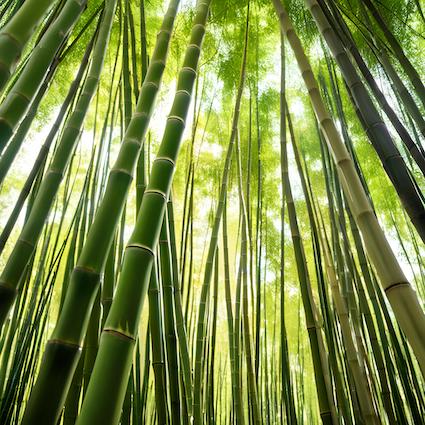

Bamboo is a fast-growing grass that belongs to the Poaceae family, which includes over 1,400 species. Unlike trees, bamboo can reach its full height in just a few months and is ready for harvest within three to five years.
In fact, some species of bamboo can grow 1.5 inches an hour, making it the fastest growing plant in the world! This rapid growth rate makes it a renewable resource, which is one of the reasons bamboo is often considered an eco-friendly material.
Related: Is Cork Actually an Eco-Friendly Product?
Bamboo is incredibly versatile. Its natural strength and flexibility have made it a popular choice for a wide range of products, from furniture and musical instruments to clothing and even paper products. Additionally, bamboo is naturally antibacterial and biodegradable, further enhancing its appeal.
The plant is predominantly found in tropical and subtropical regions, with a significant presence in Asia, Africa, and South America. However, certain species can also thrive in more temperate climates. Its adaptability and resilience make it a valuable resource in various environmental conditions.
The Eco-Friendly Advantages of Bamboo
Bamboo has gained a reputation as an eco-friendly material for several compelling reasons. Here are some of the key factors why bamboo is considered eco-friendly:
1. Rapid Growth and Renewability
Bamboo is one of the fastest-growing plants in the world. Some species can grow up to 3 feet (1 meter) in a single day! This rapid growth rate means that bamboo can be harvested much more frequently than traditional hardwood trees, which take decades to mature. After harvesting, bamboo can continue to grow without needing to be replanted, making it a highly renewable resource.
2. Low Environmental Impact of Cultivation
Bamboo cultivation generally requires fewer resources compared to other crops. It thrives in a variety of soil types and climates and often requires little water. It doesn’t need pesticides or fertilizers thanks to its natural resistance to pests and diseases. Additionally, bamboo’s extensive root system helps prevent soil erosion, improve soil health, and sequester carbon dioxide, contributing positively to the environment.
3. Carbon Sequestration
Bamboo is a champion in carbon sequestration. It absorbs carbon dioxide and releases 35% more oxygen into the atmosphere than an equivalent stand of trees. This makes bamboo an effective tool in combating climate change by reducing greenhouse gases.
Related: Everything You Need to Know About Carbon Offset Programs
4. Versatility and Biodegradability
Bamboo’s versatility is another reason it’s considered eco-friendly. It can be used to make a wide range of products, reducing the need for materials that may be more environmentally damaging to produce. Additionally, bamboo products are biodegradable, meaning they break down naturally without leaving harmful residues in the environment.
5. Minimal Waste Production
The entire bamboo plant can be used, resulting in minimal waste. For instance, the stalks can be used for construction and manufacturing, while the leaves and smaller parts can be utilized for animal feed or compost. This efficient use of resources ensures that little goes to waste.
Related: What Is Nylon and Is it Eco-Friendly?
6. Social and Economic Benefits
In many developing countries, bamboo cultivation and processing provide vital economic opportunities for local communities. It supports sustainable livelihoods and can help reduce poverty while promoting environmentally responsible practices.
Potential Disadvantages of Bamboo
While bamboo has many eco-friendly attributes, it’s important to consider some potential downsides to fully understand its environmental impact. Here are a few areas where bamboo might fall short:
1. Intensive Processing
To transform bamboo into products like fabric, flooring, or paper, it often requires intensive processing. For instance, bamboo fabric typically undergoes a chemical-heavy process to break down the tough fibers into a soft material. This can involve harmful chemicals like sodium hydroxide and carbon disulfide, which can be harmful to both the environment and workers if not managed properly.
2. Deforestation and Habitat Displacement
In some regions, the demand for bamboo has led to deforestation, where forests are cleared to make way for bamboo plantations. This can disrupt local ecosystems, displace wildlife, and reduce biodiversity. Sustainable sourcing practices are essential to mitigate these impacts.
3. Monoculture Plantations
Bamboo is often grown in large monoculture plantations, which can deplete soil nutrients and reduce biodiversity over time. Monoculture farming can make bamboo crops more susceptible to pests and diseases, potentially necessitating the use of pesticides and fertilizers, which contradicts its eco-friendly image.
4. Transportation Emissions
Most bamboo products are manufactured in Asia and then shipped worldwide. The transportation process contributes to carbon emissions, which can offset some of the environmental benefits of using bamboo. Locally sourced materials might have a smaller carbon footprint in comparison.
5. Quality and Durability Concerns
Not all bamboo products are created equal. Some bamboo items, particularly those that are cheaply made, might not be as durable as their traditional counterparts. This can lead to a shorter lifespan and the need for more frequent replacements, which diminishes their sustainability advantage.
Related: How to Go Zero Waste on a Budget and Save Money
6. Market Exploitation and Greenwashing
As bamboo has become more popular, some companies may engage in greenwashing, marketing their bamboo products as more eco-friendly than they actually are. It’s important for consumers to do their research and choose products from reputable sources that follow sustainable practices.
Tips for Ensuring Your Bamboo Products Are Eco-Friendly
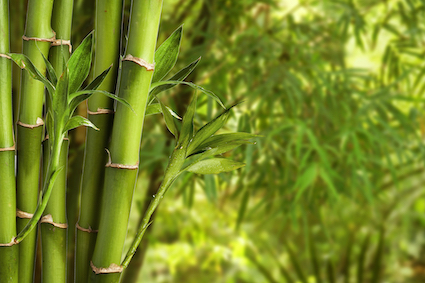

If you’re excited about incorporating bamboo into your sustainable lifestyle, it’s essential to make informed choices to ensure the products you buy truly benefit the environment. Here are some tips to help you select the most eco-friendly bamboo products:
1. Look for Certifications
Certifications can ensure that the bamboo products you buy meet specific environmental and social standards. Look for certifications such as Forest Stewardship Council (FSC) for wood and paper products as well as Global Organic Textile Standards (GOTS) and OEKO-TEX Standard 100 for textiles. These certifications indicate that the products are sourced and manufactured sustainably.
2. Research the Brand
Choose brands that are transparent about their sourcing and manufacturing processes. Reputable companies will often share information about where their bamboo is grown, how it’s harvested, and the methods used in production. Avoid brands that don’t provide this information, as they may not adhere to sustainable practices.
3. Opt for Mechanically Processed Bamboo
Whenever possible, select bamboo products that are mechanically processed rather than chemically processed. For example, bamboo linen is made using a mechanical process that involves crushing the bamboo stalks and using natural enzymes to break down the fibers. This method is more eco-friendly compared to chemically intensive processes used to make bamboo rayon or viscose.
4. Choose High-Quality, Durable Products
Invest in high-quality bamboo products that are built to last. Durable items will have a longer lifespan, reducing the need for frequent replacements and minimizing waste. Read reviews and check for product warranties to ensure you’re buying something that will stand the test of time.
5. Consider Local Options
If possible, buy bamboo products that are produced locally or regionally to reduce the carbon footprint associated with transportation. Local products often have a smaller environmental impact and support local economies.
6. Check for Sustainable Farming Practices
Support companies that practice sustainable farming methods, such as organic farming, permaculture, or agroforestry. These practices help maintain soil health, preserve biodiversity, and reduce the need for chemical inputs.
7. Be Mindful of Packaging
Pay attention to how bamboo products are packaged. Opt for products with minimal, recyclable, or biodegradable packaging to reduce waste. Avoid products with excessive plastic packaging.
8. Educate Yourself and Others
Stay informed about sustainable practices and share your knowledge with others. The more consumers demand eco-friendly products, the more companies will be incentivized to adopt sustainable practices. Your choices and advocacy can drive positive change in the market.
Different Ways Bamboo Can Be Used for Products
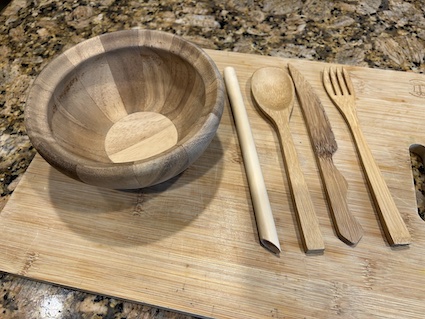

Bamboo’s versatility and eco-friendly properties make it an excellent material for a wide range of products. Here are some common and innovative uses for bamboo:
Clothing
Bamboo fibers can be processed into soft, breathable fabrics ideal for clothing. Bamboo clothing is often praised for its comfort, moisture-wicking properties, and natural antibacterial properties. You can find bamboo in T-shirts, dresses, socks, underwear, and activewear.
Towels
Bamboo towels are incredibly soft and absorbent, making them a luxurious and practical choice for your bathroom. They are also naturally hypoallergenic and resistant to mildew, making them ideal for those with sensitive skin.
Bedding
Bamboo bed sheets offer a silky-smooth texture and excellent temperature regulation, ensuring a comfortable sleep. They’re also durable and resistant to pilling. Beyond sheets, bamboo can be used for other bedding products that enhance comfort and sustainability, such as mattress protectors, mattress toppers, pillows, and pillowcases.
Related: Enjoy Healthier Sleep With a Non-Toxic and Eco-Friendly Mattress
Toilet Paper
Bamboo toilet paper is an eco-friendly alternative to traditional toilet paper. It’s soft, strong, and biodegradable, reducing the environmental impact of one of the most commonly used household products.
Kitchenware
Bamboo is a popular material for a variety of kitchen items due to its durability and natural resistance to bacteria. Common bamboo kitchen products include cutting boards, food storage containers, bamboo utensils, plates, and bowls.
Furniture
Bamboo’s strength and flexibility make it a great choice for furniture. It can be used to create stylish, sustainable pieces for any room in your home, including chairs, tables, bed frames, shelves, and outdoor furniture.
Flooring
Bamboo flooring is a durable and eco-friendly alternative to hardwood floors. It comes in various styles and finishes, providing a sustainable option that doesn’t compromise on aesthetics.
Personal Care Products
Bamboo is also making its way into personal care items. It offers sustainable options for everyday essentials, such as bamboo toothbrushes, hairbrushes, combs, and reusable cotton rounds.
Reusable Items
To reduce single-use plastic, many people are turning to bamboo for reusable alternatives. This includes bamboo straws, reusable coffee cups, lunch boxes, and reusable cutlery sets.
Construction Materials
Bamboo is used in building and construction for its strength and sustainability. It can be used for scaffolding, roofing, fencing, and composite materials for eco-friendly buildings.
These diverse uses of bamboo highlight its potential to replace less sustainable materials in various aspects of our daily lives. By choosing bamboo products, you can make a positive impact on the environment while enjoying high-quality, durable items.
Determining the Sustainability of Bamboo
Bamboo holds significant promise as an eco-friendly material due to its rapid growth, renewability, and versatility. Its ability to sequester carbon and thrive without the need for pesticides or fertilizers adds to its green credentials.
From clothing and towels to furniture and construction materials, bamboo’s applications are vast. It has the potential to replace less sustainable options in various areas of our lives.
However, it’s crucial to acknowledge the potential downsides, such as intensive processing, the risk of deforestation, and the environmental costs associated with transportation. By being mindful of these challenges and making informed choices, we can maximize bamboo’s benefits while minimizing its drawbacks.
Ultimately, whether bamboo is eco-friendly depends on how it’s sourced, processed, and used. When chosen wisely, bamboo can be a valuable component of a sustainable lifestyle.
By understanding the full picture and supporting sustainable practices, we can ensure that our choices align with our eco-friendly values. Together, we can make a positive impact, one bamboo product at a time.
More Helpful Tips on Eco-Friendly Living
Did you enjoy learning more about whether or not bamboo is eco-friendly? Are you interested in discovering other posts that can help you live a more sustainable life? Then please be sure to take a look at some of our other popular posts:
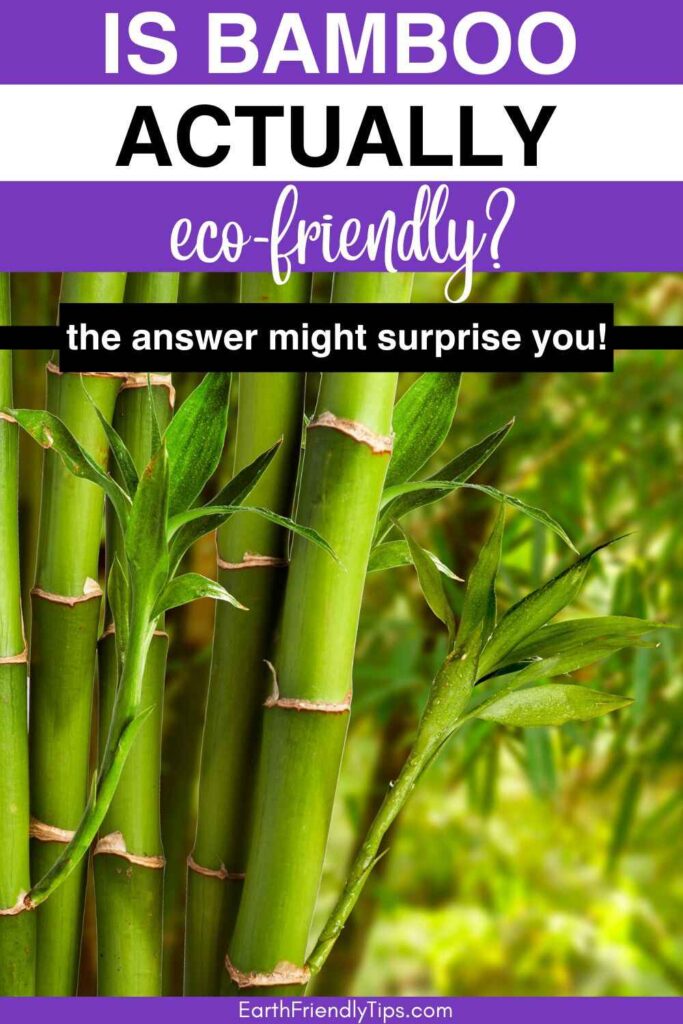

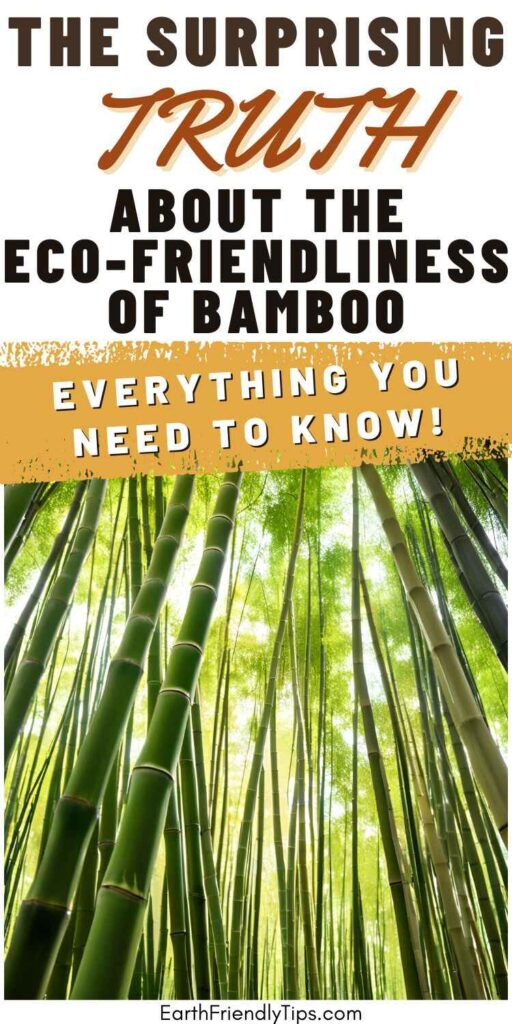

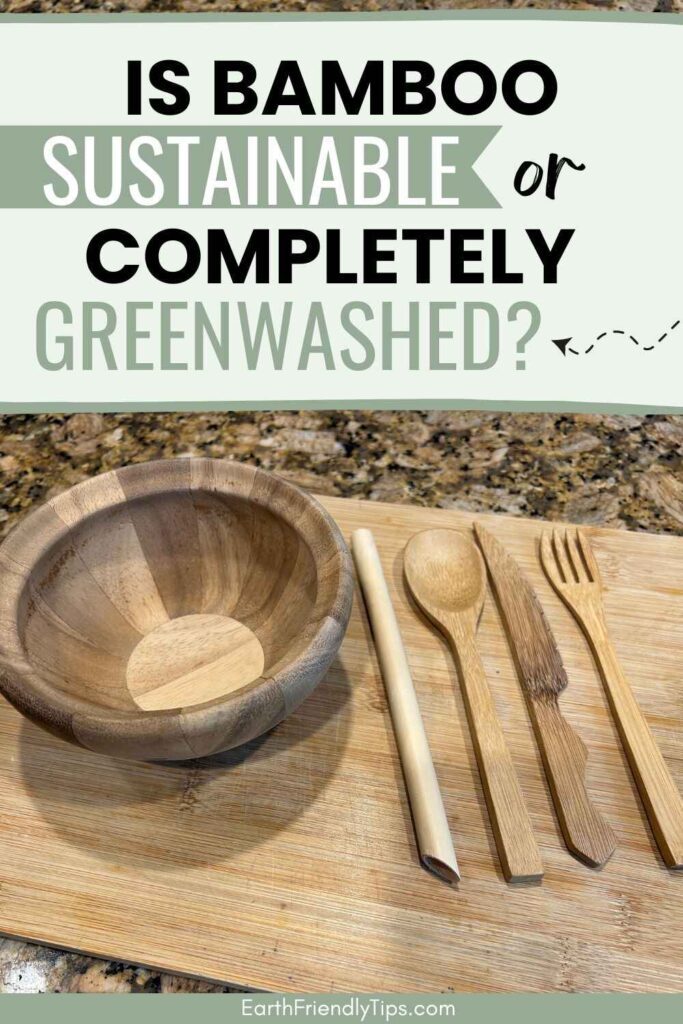

Leave a Reply